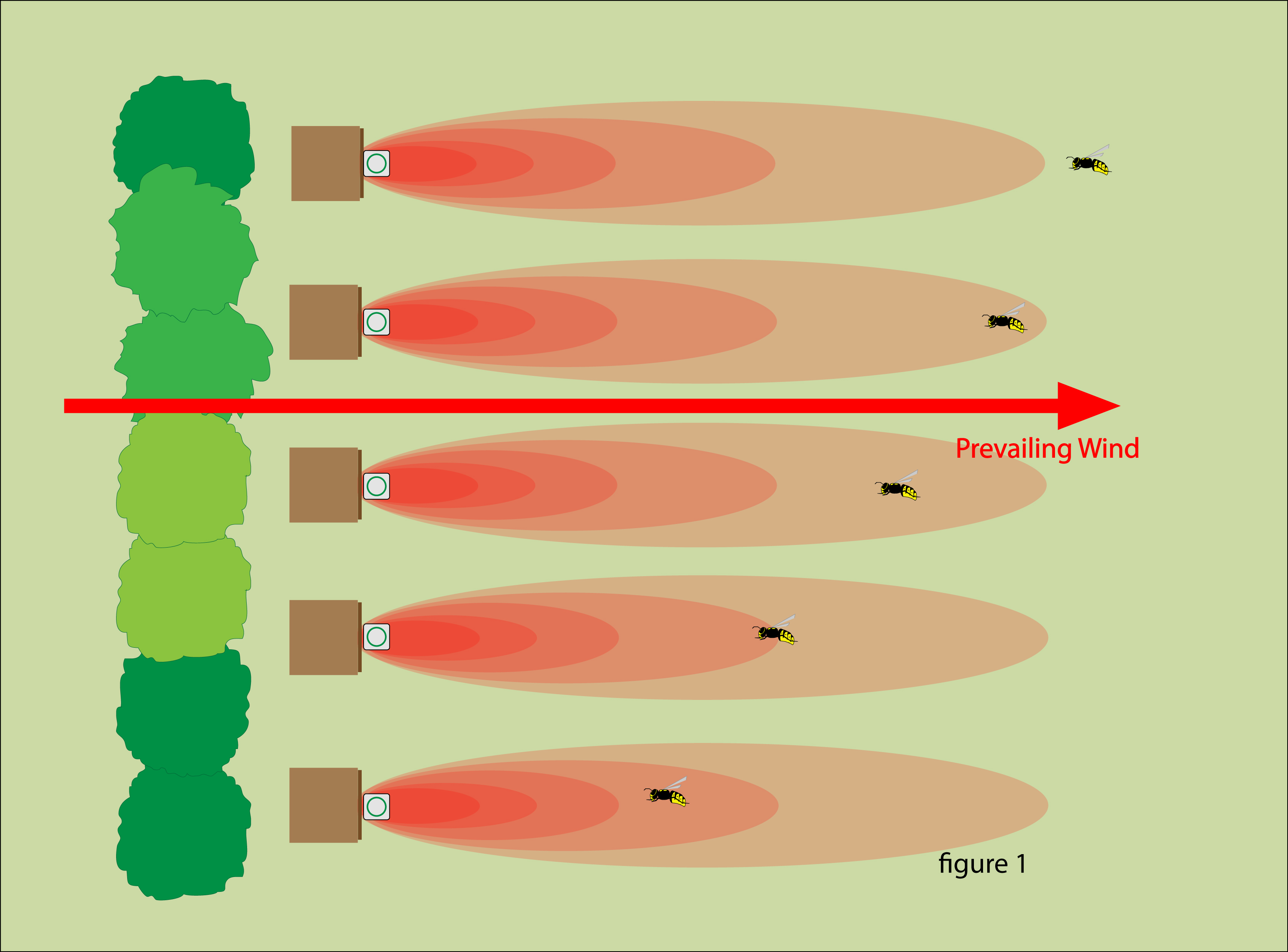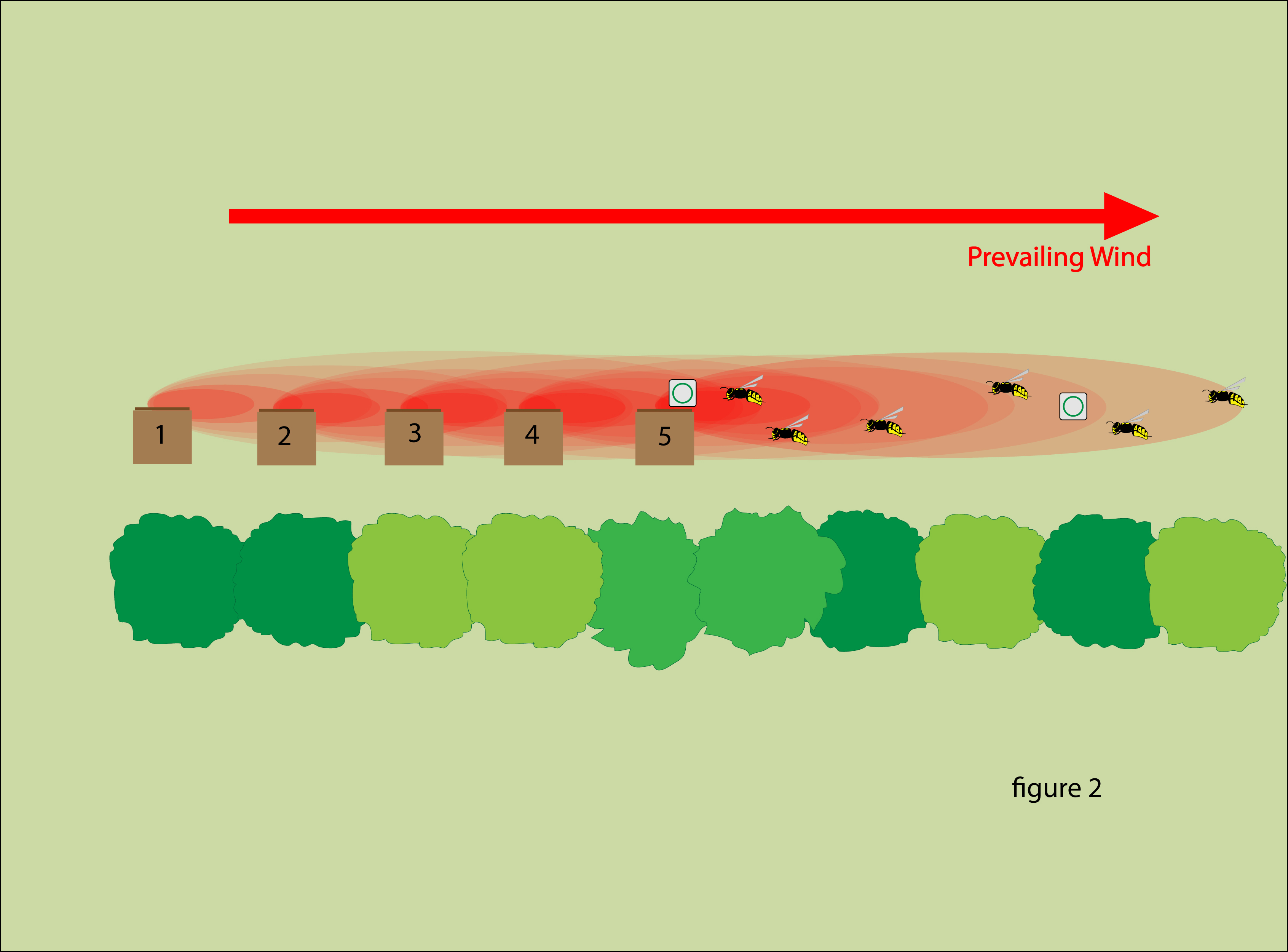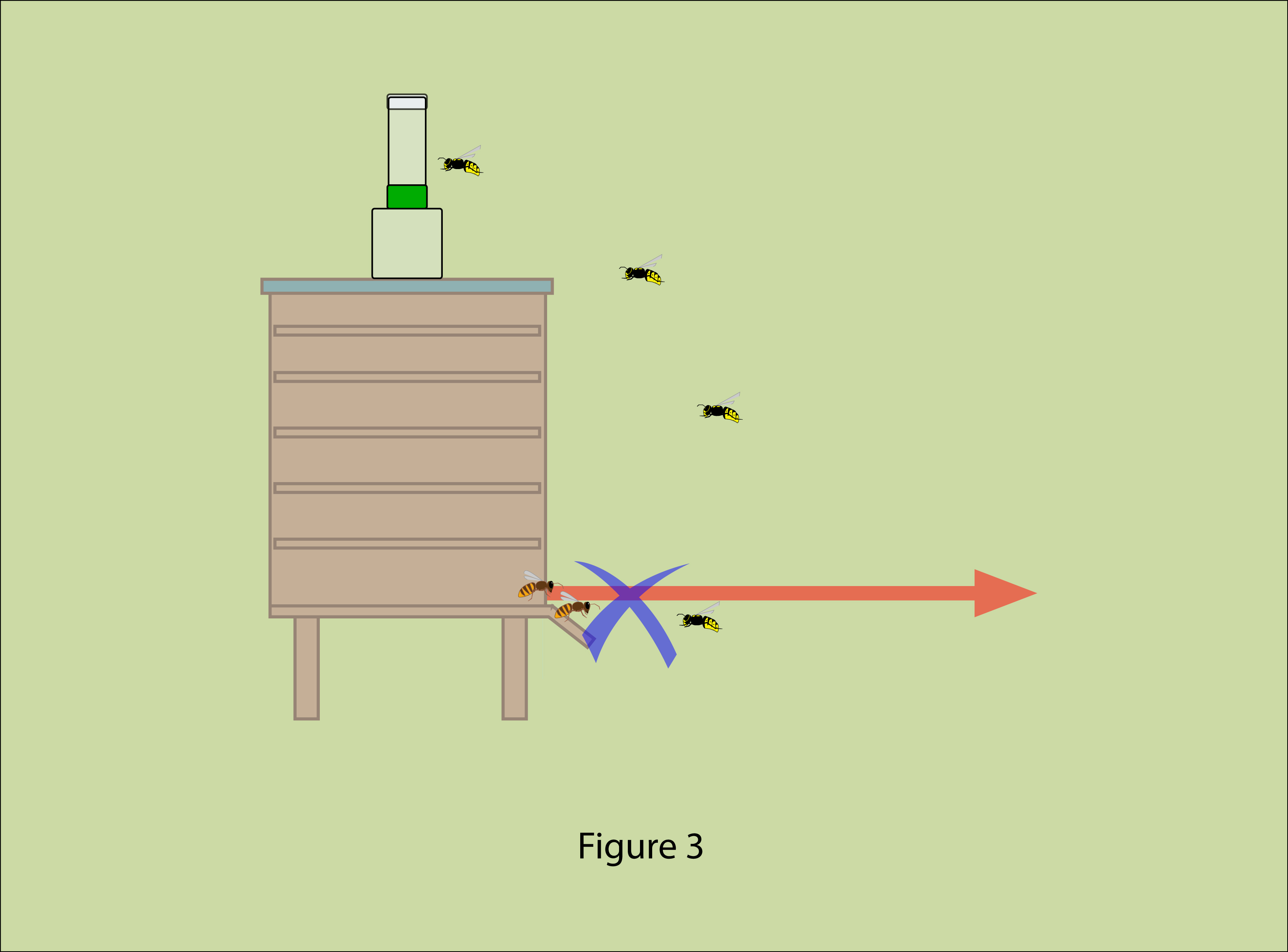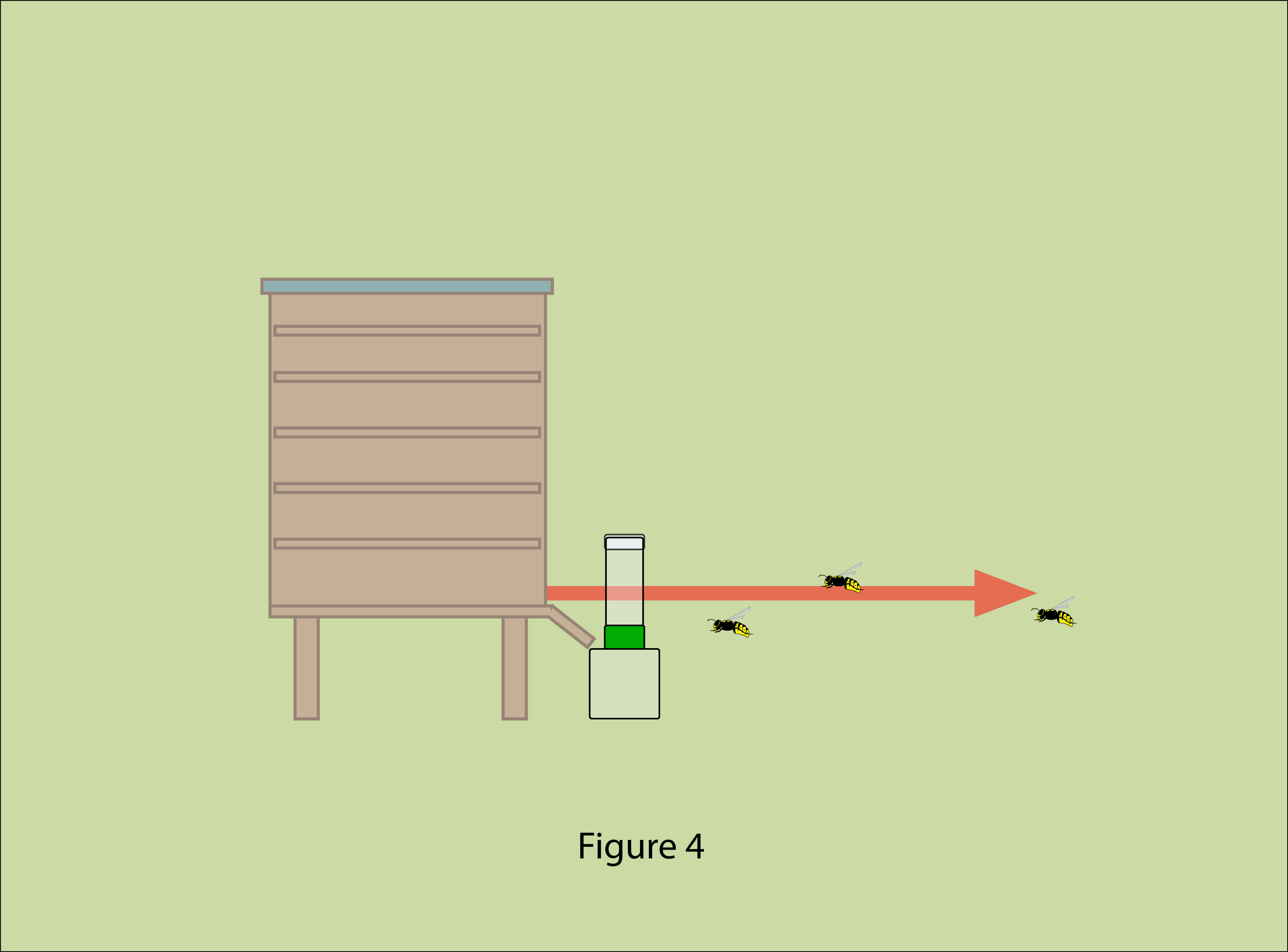The secret to protecting bee hives from serious wasp attack is to prevent scouting wasps gaining access to food stores within the hive thereby preventing swarm feeding. Moreover it is important to suppress the background population of nuisance (sweet feeding) wasps in the vicinity of the hives. These two simple objectives can be achieved by a combination of wasp proofing and interception trapping with the WaspBane wasp trap.
For interception trapping to work the WaspBane wasp trap has to be placed in between the wasps and the food source. This requires a thorough understanding of the prevailing wind direction and the individual sources of sweet smell emanating from the hives (the scent plumes). It is important to appreciate that wasps will fly up these scent plumes (i.e. fly into the wind) to find the hives. It is imperative that WaspBane wasp traps are sited within these scent plumes otherwise there is a chance that scouting wasps will find the hives and swarm feed on them all the while ignoring the WaspBane wasp trap.
In figure 1 where the bee hives are arranged so that the prevailing wind direction flows across the hives it can been seen that there are five scent plumes. In such a situation as many as five WaspBane wasp traps may be required to intercept wasps to protect the hives. In practice the stronger bee hives should be able to repel scouting wasps sufficiently so that only the weaker bee hives need protecting with WaspBane wasp traps. Where strong bee hives successfully repel scouting wasps the wasps will divert their attention to weaker hives. Provided the WaspBane wasp traps are sited correctly then they should eradicate a significant number of such scouting wasps and therefore prevent serious wasp attack. 
Where the prevailing wind flows along the bee hives then protecting the hives with WaspBane wasp traps becomes a little easier because effectively there is only one scent plume. In figure 2 the bee hives are protected by one WaspBane wasp trap sited at the hive furthest downwind. In situations where there are abnormally high wasp numbers then a second WaspBane trap may be deployed further downwind within the scent plume for added protection. 
Situating the WaspBane wasp trap downwind of the bee hives is simply a matter of suspending the WaspBane wasp trap from a suitable hanging location. If need be a shepherd’s crook tea light hanger can be used and the trap set roughly at the same height as the bee hives.
Where the bee colony is strong and able to repel scouting wasps then the WaspBane wasp trap can be sited directly on top of the bee hive roof as shown in figure 3. In such situations it may pay to use double sided Velcro or tape to adhere the WaspBane wasp trap firmly in place. Whilst a fully baited WaspBane wasp trap is heavy nevertheless it may still get blown over in strong gusting gales. When baiting up WaspBane wasp traps please ensure that you follow the advice on bee safety. 
Where weaker bee hives require protecting then the optimum location for siting the WaspBane wasp trap is directly in front of the hive entrance so that the entry flutes to the WaspBane wasp trap are exactly in line and at the same height as the hive entrance as shown in figure 4 below:
Please note that if the WaspBane wasp trap is sited on the ground as shown in figure 4 then it may attract and catch large slugs. Any large slugs caught in the WaspBane wasp trap should be removed and where necessary the vapour chamber should be washed with soapy water and thoroughly rinse with clean water. Slugs are molluscs and have flesh and if they die within the WaspBane wasp trap the trap may go off as the slugs rot. Moreover, some slugs have a wasp repellent slime which may also stop the WaspBane wasp trap from working.

 Follow
Follow
